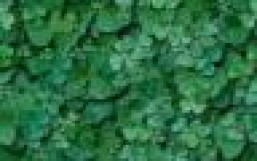Are you planting or specifying invasive plants? Did your plant supplier or contractor substitute some invasive plants in your project? Do you even know?

Source: www.nps.gov
Did you know that the US spends upwards of $138 billion annually to manage both plant and animal invasive species that threaten and impact crops, managed forests, recreation areas, and wildlife habitats? This does not account for the extensive invasive management efforts by private land owners and managers, non-profit groups, and volunteer crews. And did you know that there are studies that directly link development to exotic plant invasions, as well as profit driven nursery industries. These are just some of the reasons that the Sustainable Sites Initiative requires you to document that you are not planting an invasive plant with Prerequisite 4.2.
We often assume that nurseries wouldn’t sell us an invasive plant. While this is the law, the law only pertains to plants listed in the national data base of invasive plants. While there is a pretty extensive list of nationally recognized invasive plants, many states and local regions are battling invasive plants that are still widely sold at local nurseries.
Many of us don’t take the time to educate ourselves or others on the project team about local invasive plants when working on a project. I personally know of a couple of cases where the landscape contractor unknowingly substituted invasive plants on habitat restoration projects when they were unable to obtain all the plants specified in the planting plan.
So how do you educate yourself, your plant supplier, your contractor, and others? There are local organizations that can usually help educate you and provide you with lists of local known invasives, as well as species of concern. These may include state and regional Invasive Plant Councils, local Soil and Water Conservation District offices, local Forest Service Offices, Universities, and others. Many government agencies and regional organizations produce free resources such as Invasive Plants of the Eastern United States: Identification and Control, A Management Guide for Invasive Plants of Southern Forests, and Plant Invaders of Mid-Atlantic Natural Areas. There is an amazing amount of information available online; a web search using the word ‘invasive’ and your local area may bring up some local lists or links.
Here are a few helpful resources:
Plant Wise is a partnership between the National Park Service, Lady Bird Johnson Wildflower Center, The Garden Club of America, National Invasive Species Council, the Student Conservation Association and many others. Their webpage has a great deal of resources and links, especially links to state and local invasive species organizations and lists. www.beplantwise.org
USDA Invasive Plants Page has a wealth of information on invasive species including profiles and images of some of the worst offenders www.invasivespeciesinfo.gov/plants/main.shtml
Center for Invasive Species and Ecosystem Health also has many resources and information on invasive species and their management, including links to many publications available online. www.invasive.org






